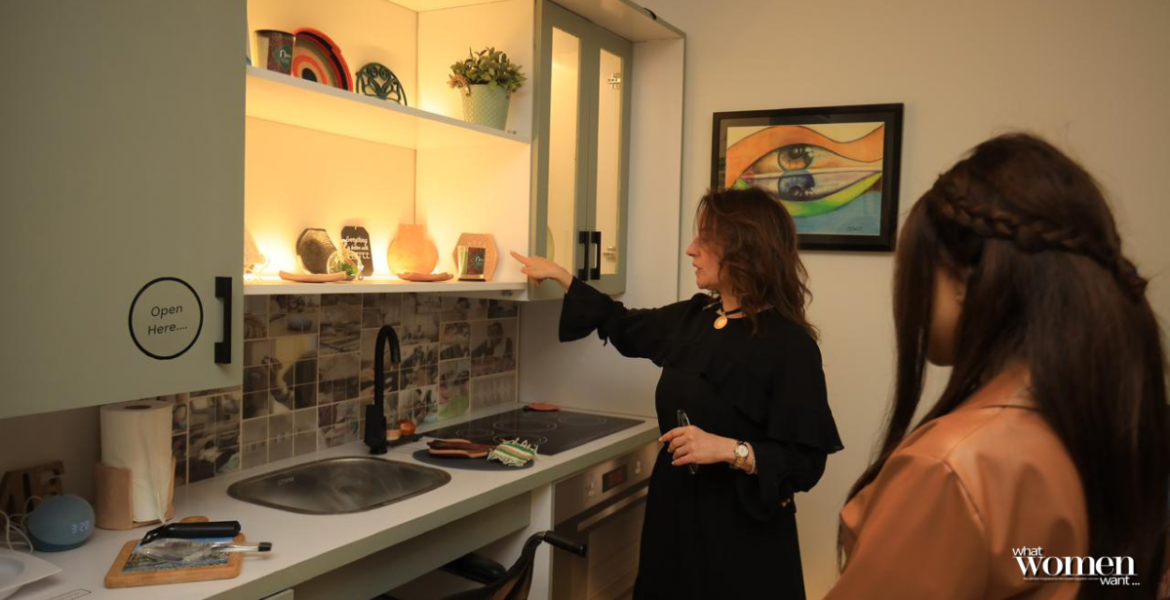Sherry Raef is a woman that was destined to become an interior designer. Her love of design started at a very young age. She would take scrabs of her grandma’s fabric and mix and match them to create designs. Her eye would always scan any room she would walk into for design elements she liked and did not like. This led her to one path which is to become an interior designer. Raef is also the founder of consultancy hub specializing in creating accessible design solutions tailored for persons with different abilities as well as Age, Designability, aiming to make the world a more inclusive place, one room at a time!
The Birth of Designability:
“Designability was my dream, honestly”
Designability officially started in 2019, but its story stems from years before. Her professional journey spans years and across different countries contributed to her journey with designability. Working in Canda, she was in awe of how accessible Canada is. The inspiration behind designability is very personal to Raef. “In 2019, my dad had a stroke and he got partially paralyzed”, she explained. After her father recovered and returned home, they realized their home was not suitable for his case. She added, “I want to see what I could to the house to make more accessible to him and to help her also.” While conducting this research, she found herself completely fascinated and decided she wanted to take it to a whole other level.
Her journey began soon after. The interior designed started looking for courses and certifications. Her introduction to accessible design was CAPS, also known as Certified Aging in Place Specialist. Then, she went into taking courses for people who are physically and mentally differently abled. This is a program that enables designers to recommend home modifications and design solutions to people who are aging in place. The interior designer reminisced, “On my first day, I told them I really want to implement this when I got back to Egypt, to my home country.” She finally found a common ground between her love of design and her advocacy for people who are differently abled.
Designability in Cairo Design Week:
 When Raef started Designability, she was met with a lot of discouragement. But, she did not let a single no slow her down. “I wanted to create something and I want people to see it. The best place to go to is Cairo Design Week”, she said. Raef know when people saw her designs for differently abled people, they would start to understand the concept of Designability. She created a mock up that had six zones; living room with a kitchenette, a bathroom, a hallway, an office, a zone for people with Autism and ADHD, and a sensory garden.
When Raef started Designability, she was met with a lot of discouragement. But, she did not let a single no slow her down. “I wanted to create something and I want people to see it. The best place to go to is Cairo Design Week”, she said. Raef know when people saw her designs for differently abled people, they would start to understand the concept of Designability. She created a mock up that had six zones; living room with a kitchenette, a bathroom, a hallway, an office, a zone for people with Autism and ADHD, and a sensory garden.
A Dive into The Mockup:
Each one of the zones targeted a different group of people who are differently abled. The living room was designed for elders, while the bathroom was with people who are physically differently abled. The hallway was for people with visual impairments and filled with art. Another zone was designed for people with Autism and ADHD, and the sensory garden included both soft and hard landscaping to use all five senses.
Each detail of the mockup was perfectly designed to match their needs. Raef included furniture with no sharp edges, the measurements fit wheelchairs, and all doors and cabinets were accessible. “All the art included in the exhibition was drawn by kids who are differently abled”, she explained. Also, all of the accessories in the rooms were meant to engage the senses and cater to people who are differently abled. She exemplified, “For people who have Parkinson’s disease, and their hand shakes a lot, we included a cup that does not spill”. This is only one of example of the level of paying attention to details that Raef put into her mock up.
Raef’s Adivce:
“Put yourself in their shoes”, is Raef’s advice for people wanting to go into the field of accessible design. She explained that reading about accessibility in books is completely different than living it. When designing for a specific physical or mental impartment, you have to live with people who have it. In doing so, you are able to truly grasp their needs.


